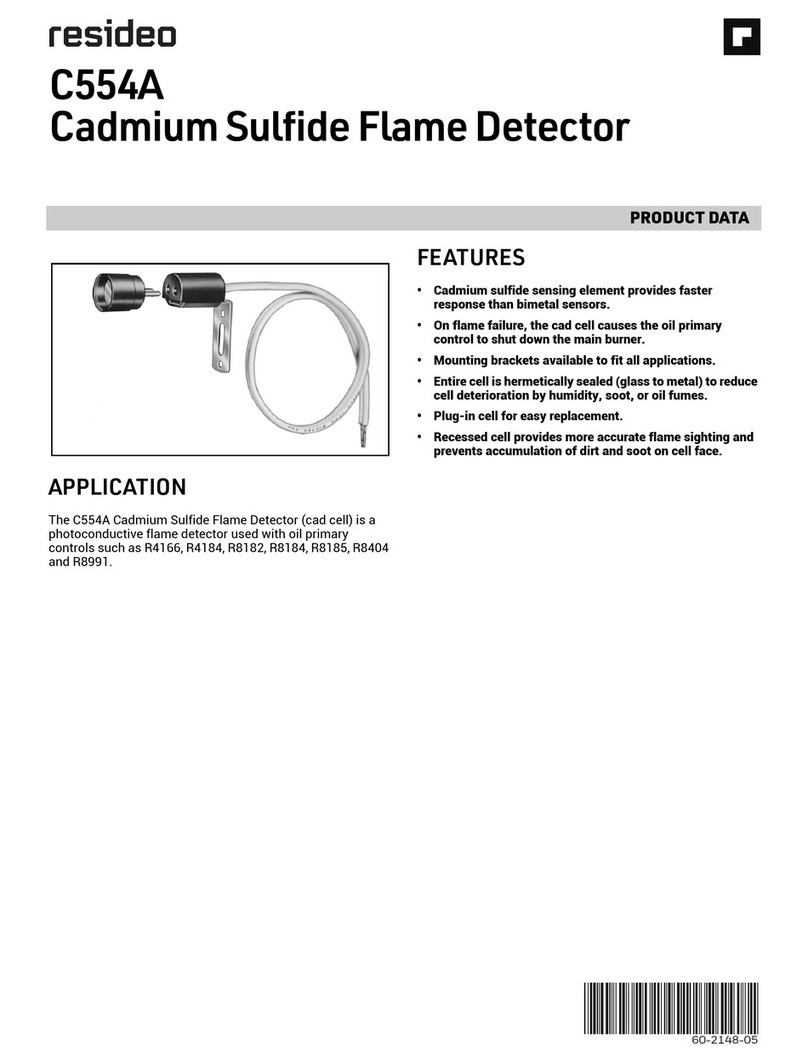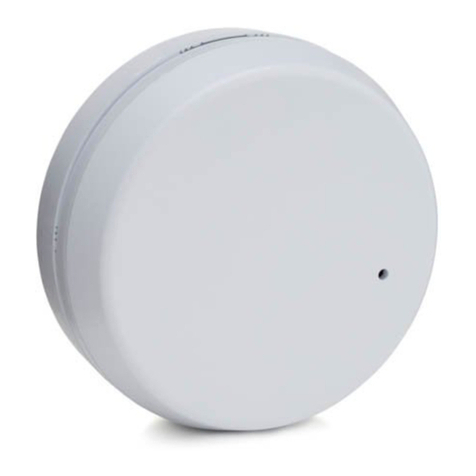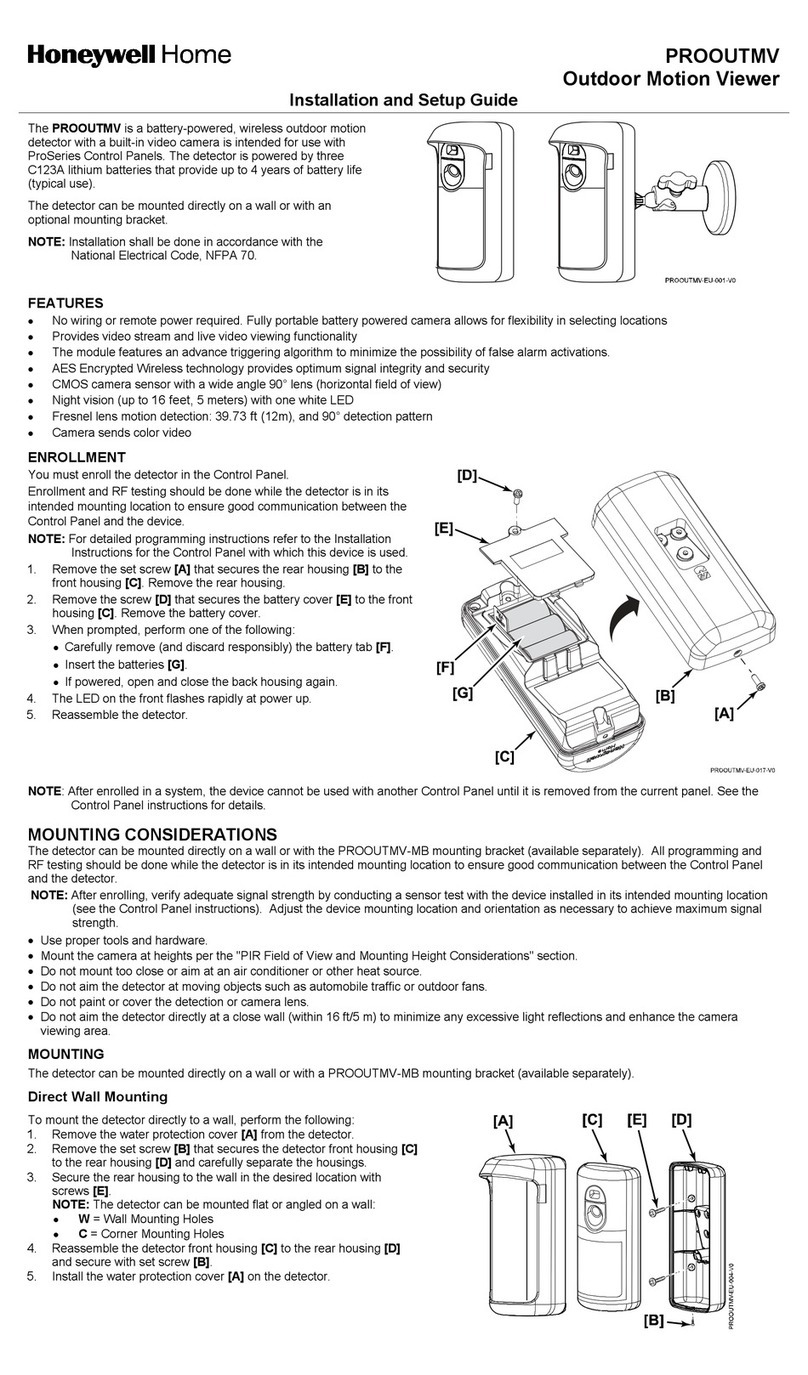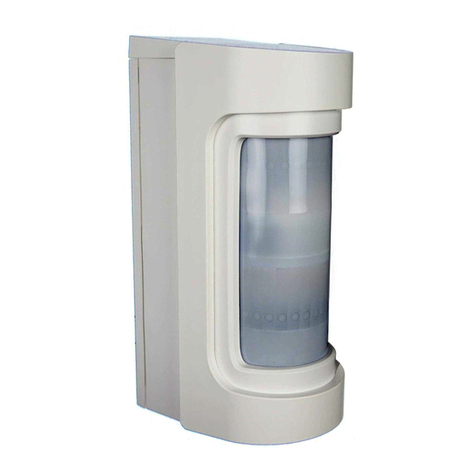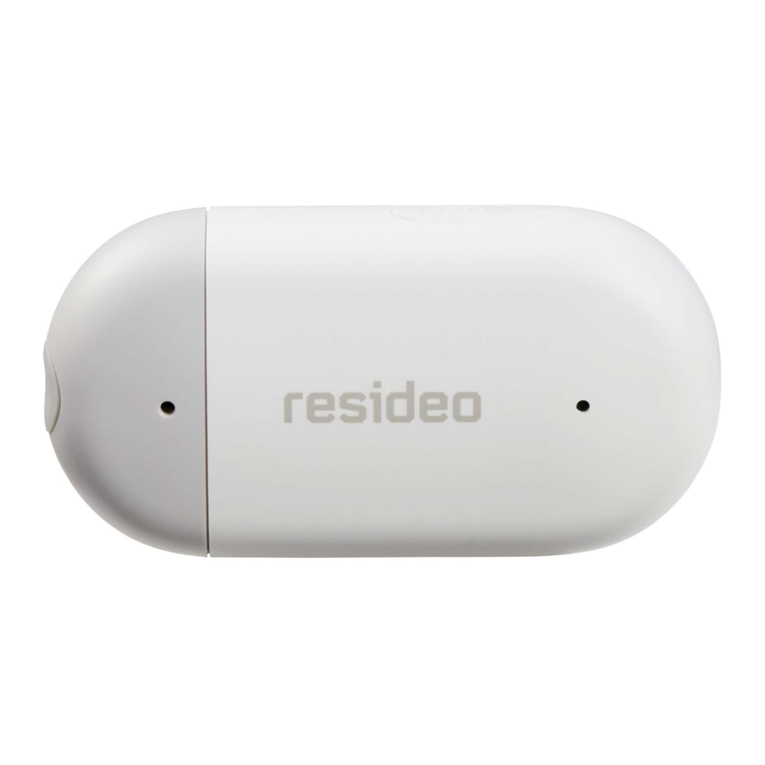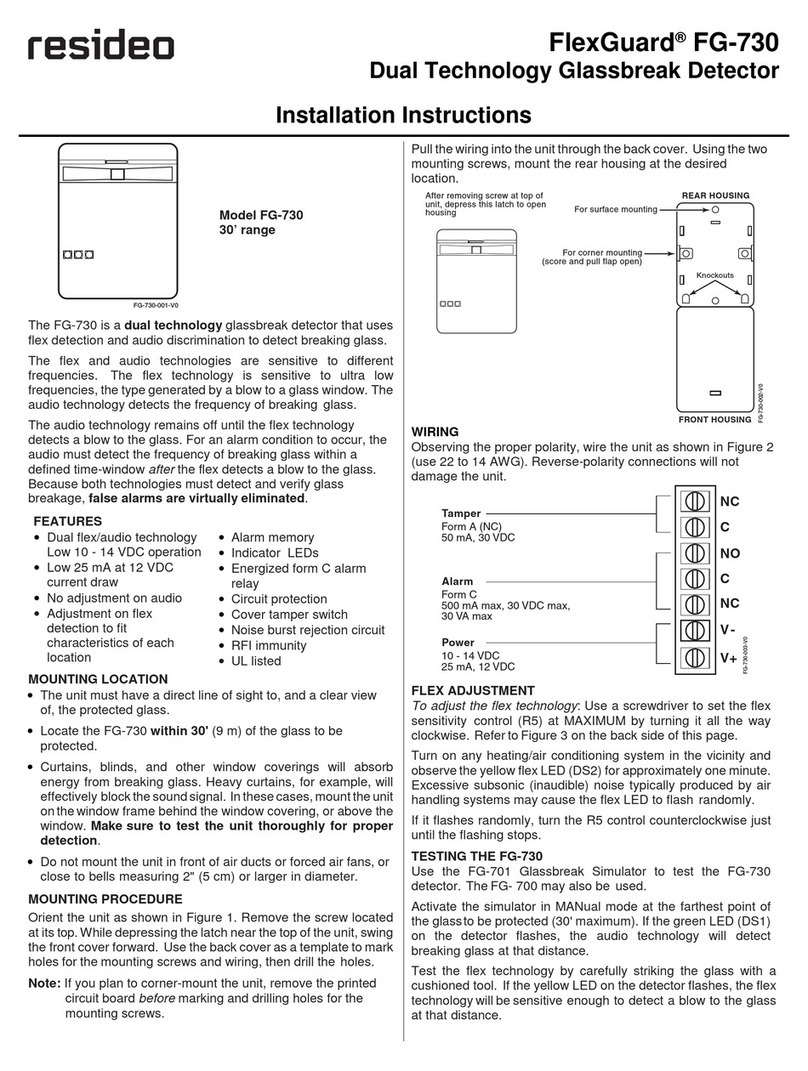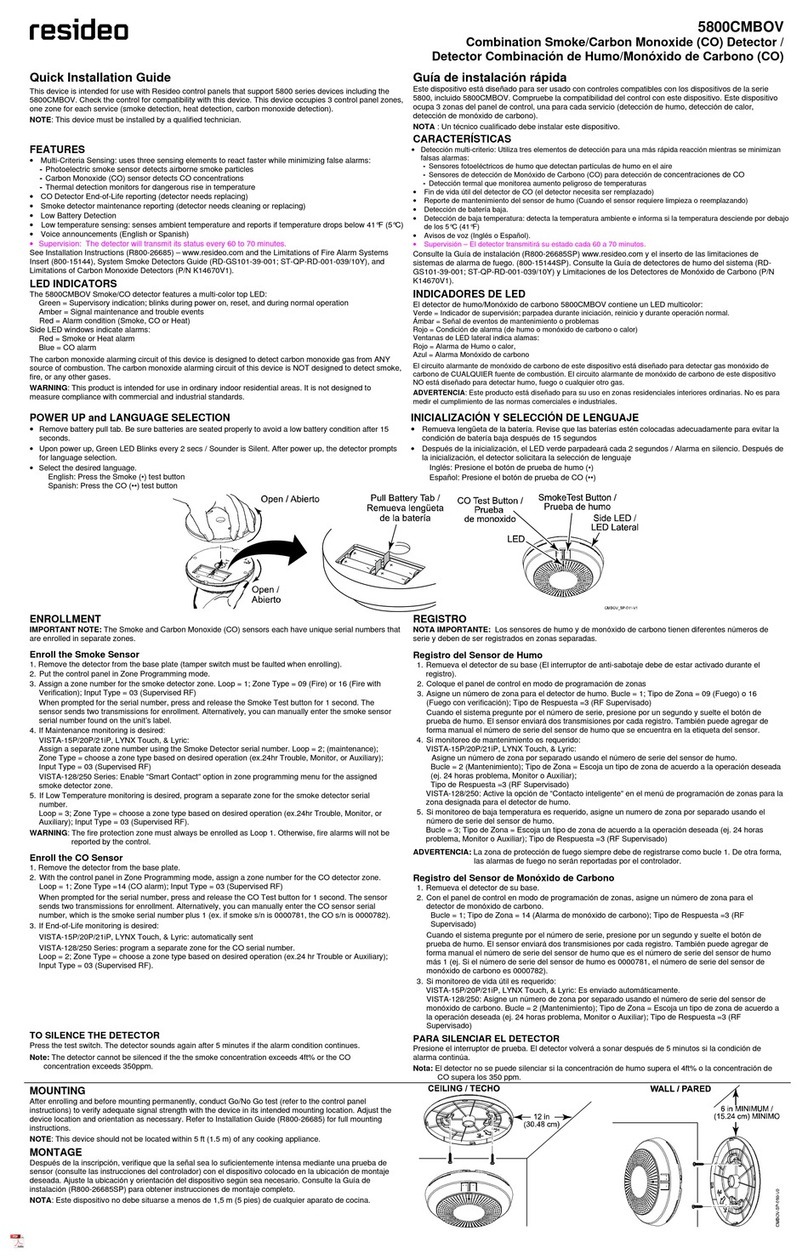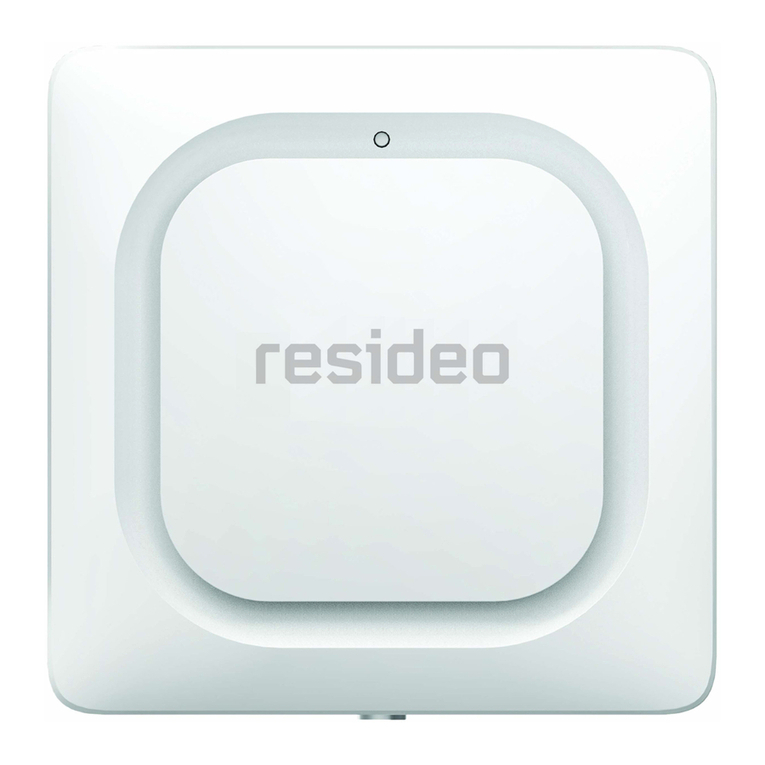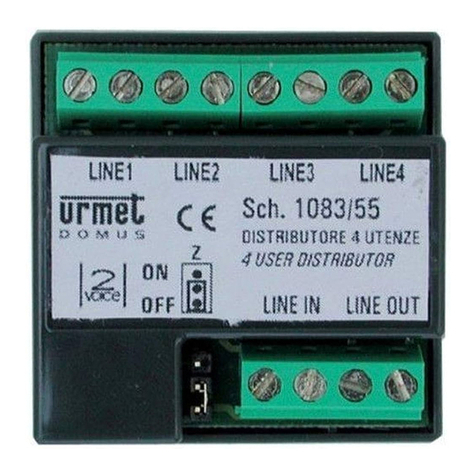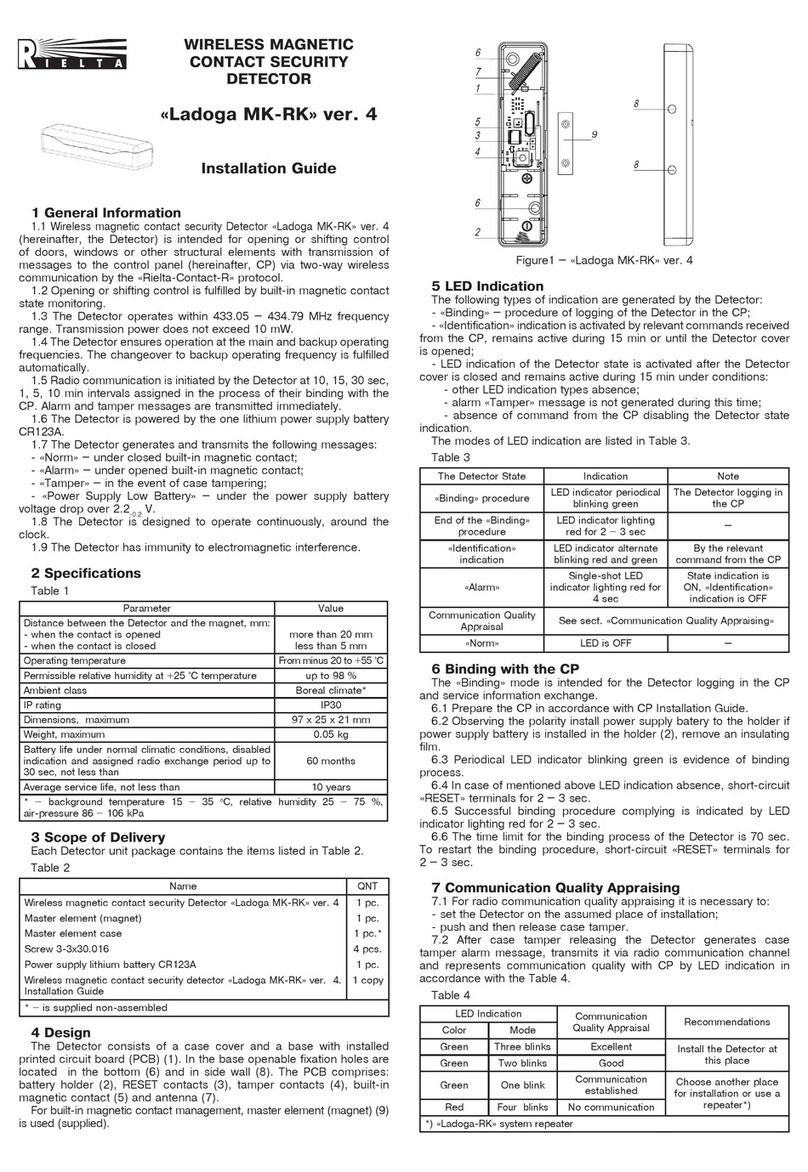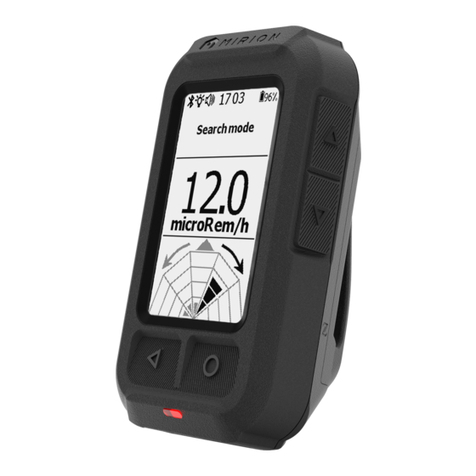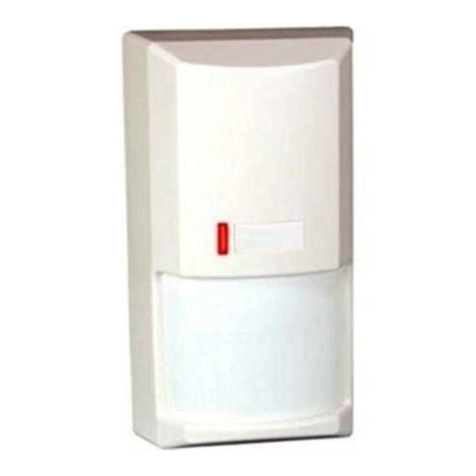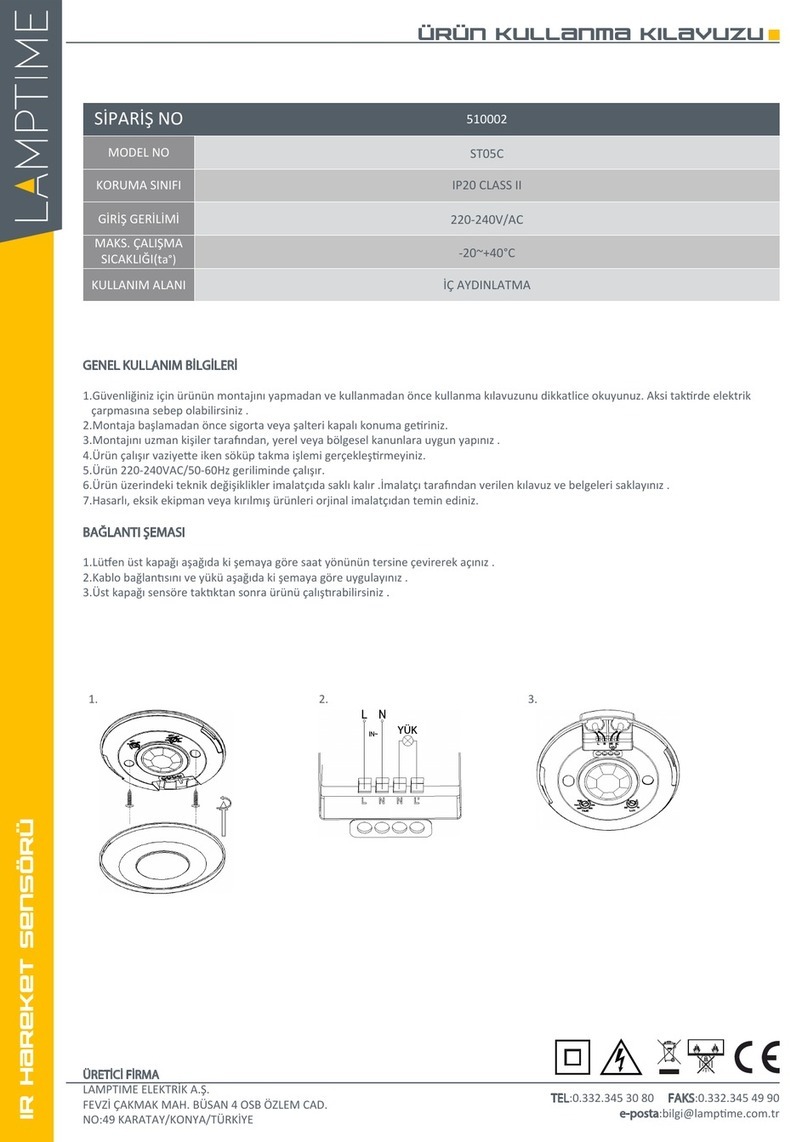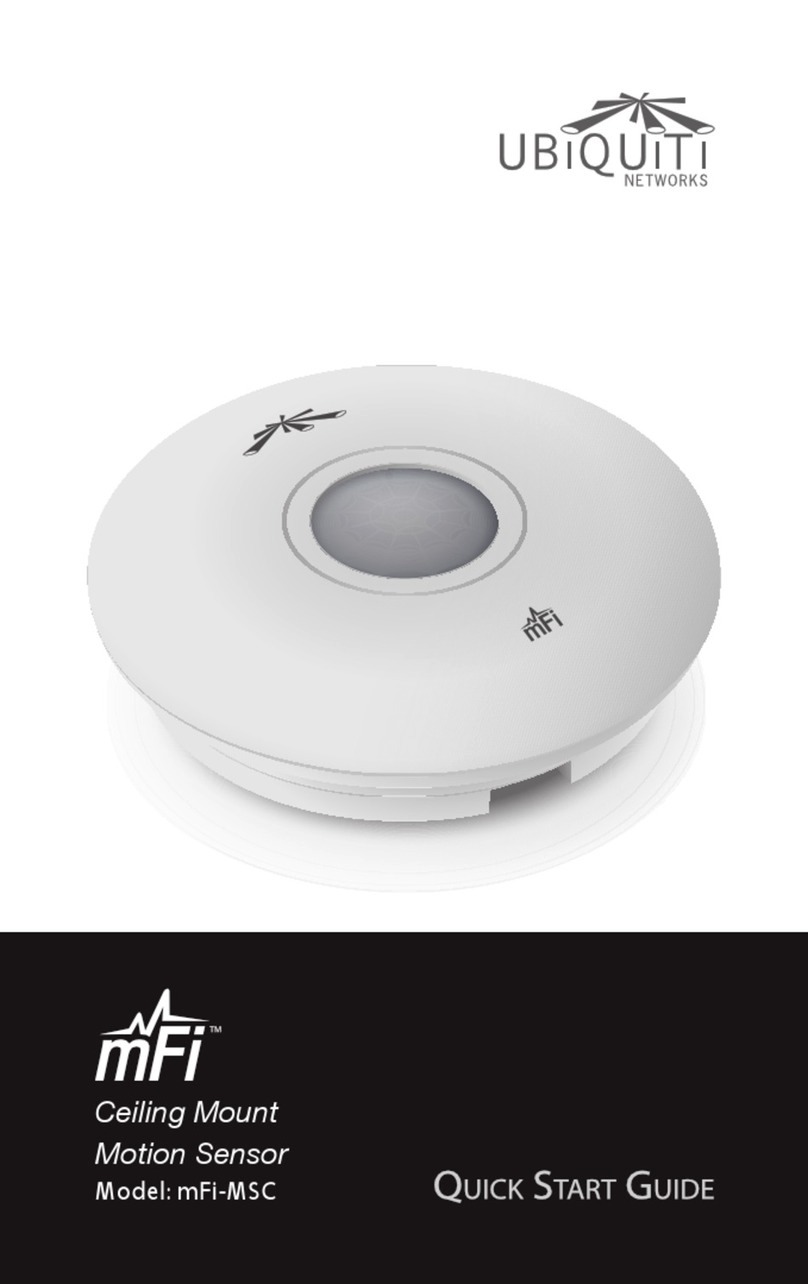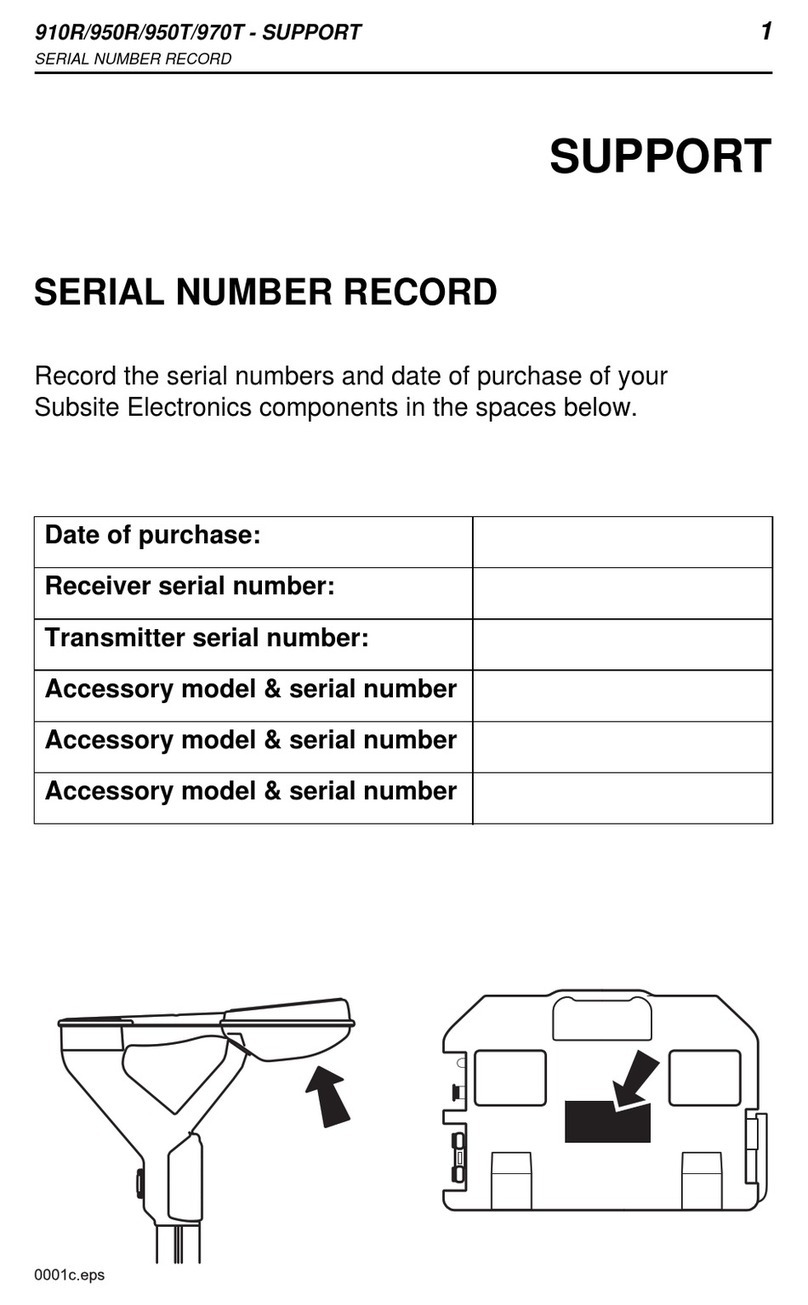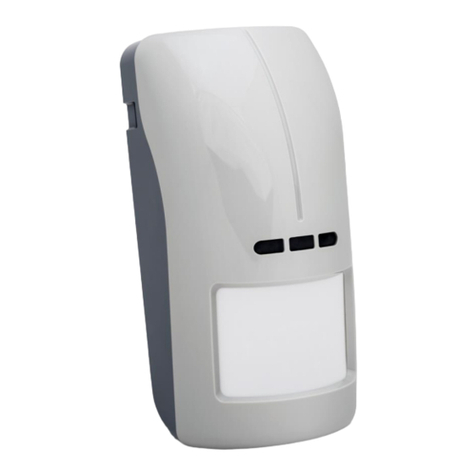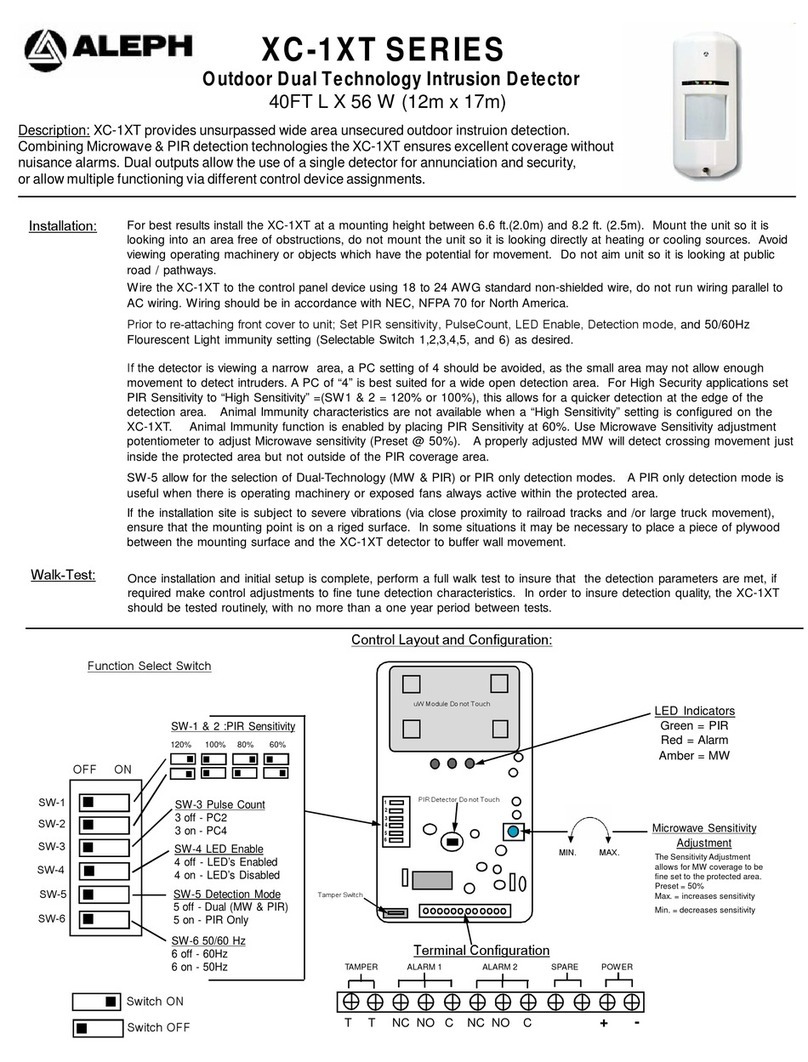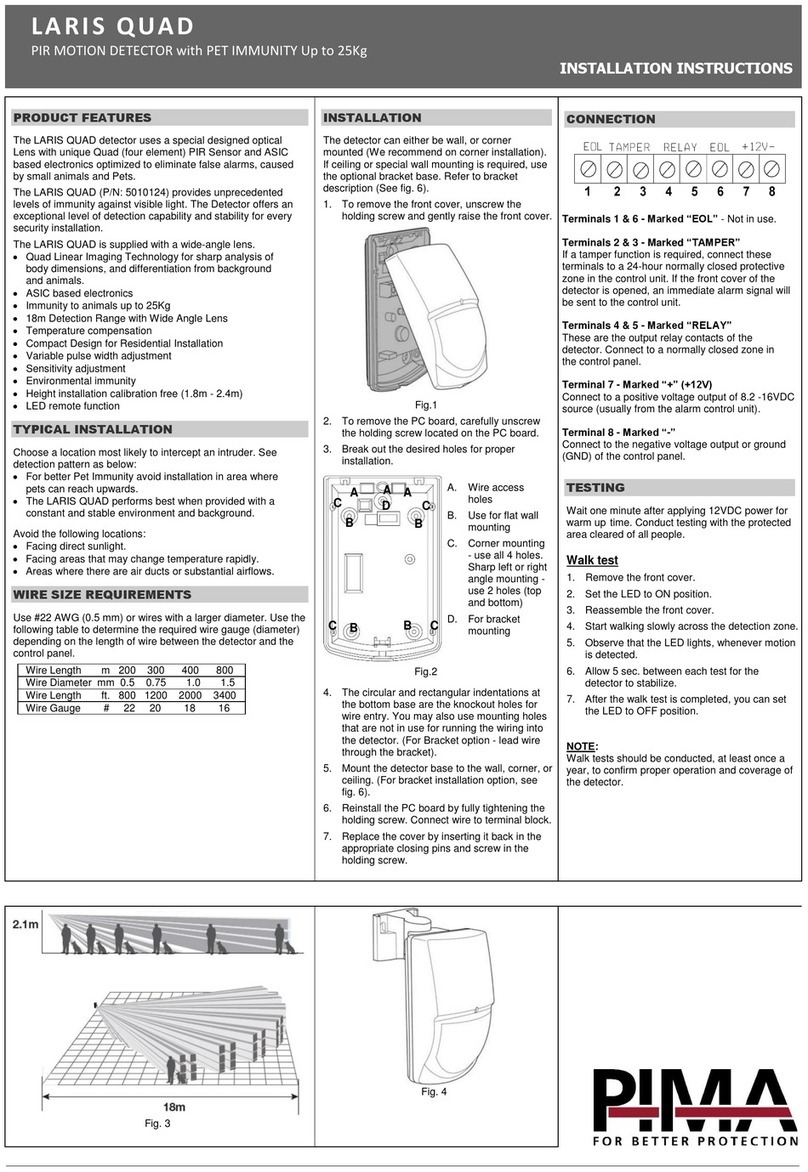
- 3 -
SPECIFICATIONS
Operating Temperature: .................................................................................................................................................... 14°to 131°F / -10°to 55°C
Relative Humidity: .................................................................................................................................. 5 to 93% (UL tested at 93%); non-condensing
Dimensions:........................................................................................................................................................ 3.86 x 2.24 x 1.69in / 98 x 57 x 43mm
Tamper: .................................................................................................................................................................... Cover and Wall Tamper Protection
Electrical Power:..........................................................................................................................................15mA (normal use); 17mA (maximum use)
Microwave Frequency: ................................................................................................................................................................................ 10.525GHz
Range: ........................................................................................................................................ Cone shape detection area of 40 x 56ft (12.2 x 17.1m)
Pet Immunity:................................................................................................................................................................................... Up to 100lb / 45kg)
TROUBLESHOOTING
Closed Open
Off Flashing
*TROUBLE CONDITIONS
1
Self-Test Failure conditions:
• Microwave supervision failure: The sensor is operating in PIR mode only.
• PIR self-test failure: The sensor is disabled.
• Temperature compensation failure: The temperature compensation is disabled.
Depending on the Trouble condition, take the following corrective actions:
• Verify the power supply is sufficient (at least 9V at the sensor).
• Cycle power to the sensor.
• Walk test the sensor.
If the Trouble condition does not clear, replace the sensor.
APPROVAL LISTINGS
•FCC part 15, Class B verified
•IC ICES-003, Class B verified
•UL 639
•ULC S306-03
•SIA-PIR-01 Passive Infrared detector standard features for false alarm immunity.
Product must be tested at least once each year / Le fonctionnement du produit doit être vérifié au moins une fois par année /
El producto debe ser probado al menos una vez al año / O produto deve ser testado pelo menos uma vez por ano
All wiring must be in accordance with: the National Electrical Code (ANSI/NFPA70); the Canadian Electrical Code, Part I (where applicable);
UL681, Standard for Installation and Classification of Burglar and Holdup Alarm Systems; ULC-S302, Standard for Installation and
Classification of Burglar Alarm Systems for Financial and Commercial Premises, Safes and Vaults; ULC-S310, Standard for Installation and
Classification of Residential Burglar Alarm Systems; local codes and the authorities having jurisdiction.
The products are intended to be powered by a power-limited output of a UL/CUL Listed Burglar Alarm control unit, or via a Listed UL603/ULC-
S318 power-limited power supply that provides 4 hours of standby power.
The sensor must be mounted indoors, within the protected premises, and on a wooden stud, solid wood or with a robust wall anchor.
UL Notes: All interconnecting devices must be UL listed. The pet immunity feature has not been evaluated by UL.
FEDERAL COMMUNICATIONS COMMISSION STATEMENTS
The user shall not make any changes or modifications to the equipment unless authorized by the Installation Instructions or User's Manual.
Unauthorized changes or modifications could void the user's authority to operate the equipment.
CLASS B DIGITAL DEVICE STATEMENT
This equipment has been tested to FCC requirements and has been found acceptable for use. The FCC requires the following statement for your
information:
This equipment generates and uses radio frequency energy and if not installed and used properly, that is, in strict accordance with the manufacturer's
instructions, may cause interference to radio and television reception. It has been type tested and found to comply with the limits for a Class B
computing device in accordance with the specifications in Part 15 of FCC Rules, which are designed to provide reasonable protection against such
interference in a residential installation. However, there is no guarantee that interference will not occur in a particular installation. If this equipment does
cause interference to radio or television reception, which can be determined by turning the equipment off and on, the user is encouraged to try to correct
the interference by one or more of the following measures:
• Reorient the receiving antenna until interference is reduced or eliminated.
• Move the radio or television receiver away from the receiver/control.
• Move the antenna leads away from any wire runs to the receiver/control.
• Plug the receiver/control into a different outlet so that it and the radio or television receiver are on different branch circuits.
• Consult the dealer or an experienced radio/TV technician for help.
INDUSTRY CANADA CLASS B STATEMENT
This Class B digital apparatus complies with Canadian ICES-003.
Cet appareil numérique de la classe B est conforme à la norme NMB-003 du Canada.
FCC/IC NOTICE: This device complies with Part 15 of the FCC Rules, and RSS-210 of IC. Operation is subject to the following two conditions: (1) This
device may not cause harmful interference (2) This device must accept any interference received, including interference that may cause undesired
operation.
Cet appareil est conforme à la partie 15 des règles de la FCC & de RSS-210 des Industries Canada. Son fonctionnement est soumis aux conditions
suivantes: (1) Cet appareil ne doit pas causer d' interférences nuisibles. (2) Cet appareil doit accepter toute interférence reçue y compris les
interférences causant une réception indésirable.


